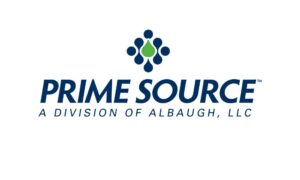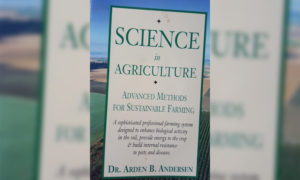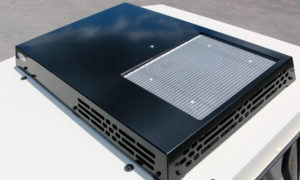Are we really making informed decisions?
As managers, it is our job to make decisions. To do our job well we need to make informed and defensible decisions. We rely on pesticides as
a key tool in our IPM programs, but how informed and defensible are the decisions we make about which products we choose to use? Efficacy
and cost have historically been our most significant considerations, but if the general public is most concerned with environmental impact
even when products are used properly, then shouldn’t we give greater consideration to it in our decision making?
Given the scrutiny we will likely face as we meet the requirement to publicly report our annual pesticide usage, I think it is in our
collective best interest to be proactive and begin building low-impact programs based on sound environmental data. Until recently there has
been little easily available information to provide insight into the environmental impact of pesticides other than product labels and
Material Safety Data Sheets (MSDS). And while labels and MSDSs do contain some relevant information, they fail to make an objective
comparison of products as they would be used in the field a straight forward process.
The purpose of this article is to highlight a method of comparing pesticide products by their theoretical environmental impact developed by
the New York State Integrated Pest Management Program and Cornell University extension. The Environmental Impact Quotient (EIQ) of pesticide
active ingredients will be used to calculate Field Use EIQ values, and products used for the control of dollar spot will be compared as an
example.
Product comparison can fill the knowledge gap
The project entitled A Method to Measure the Environmental Impact of Pesticides undertaken by the NY State IPM Program and Cornell
University Extension developed the EIQ as a means of compiling and organizing the extensive toxicological and environmental impact data
produced through various avenues of research, including the US EPA pesticide registration process. Using published toxicological and
environmental impact research they have assigned an EIQ Value to each active ingredient. The assigned EIQ Value takes into account criteria
such as dermal toxicity, chronic toxicity, fish toxicity, bird toxicity, bee toxicity, beneficial arthropod toxicity, plant surface half-
life, leaching potential, soil half-life, and so on. The full details of the program and the complete data tables can be found on the
program website (http://www.nysipm.cornell.edu/publications/eiq/default.asp).
Putting the EIQ Values into action to objectively compare pesticide active ingredients against one another as they would be used in the
field is made easy with the EIQ Calculator. The equation is as follows: Field Use EIQ = Assigned EIQ Value x % Active Ingredient x
Application Rate. The Assigned EIQ Value for each active ingredient is already loaded into the EIQ Calculator so the input of application
rate and percent active ingredient of the formulation being applied is all that is required.
The Calculator produces the Field Use EIQ and also shows the consumer, worker, ecological EIQ ratings which make up the key components of
the Field Use EIQ. Comparing active ingredients against one another as they would be used in the field can clearly identify lower impact
products.
Common products show distinctly different levels of impact
To illustrate the value of this tool in the comparison of product options, I have utilized the EIQ Calculator to produce the Field Use EIQ
values for the Class 9 products registered in Ontario for
control of dollar spot. The application rate input for the calculations was the minimum label rate for
control of dollar spot. Not all manufacturer labels provide the active ingredient guarantee as a percent,
so in those cases, some additional calculation to convert to a percent value (see appendix) prior to inputinto the calculator is required.
The graph below displays the results of the example EIQ calculations, illustrating that a large difference exists between the products for
control of dollar spot in Ontario with respect to their Field Use EIQ rating.
The graph clearly shows that some commonly used products for control of dollar spot have a considerably larger theoretical environmental
impact than do many of the others. In fact, it seems quite
possible to develop an entire program making several applications, complete with appropriate product
rotation to prevent resistance, that would have a lower environmental impact than just one application
of some others.
Compare Field Use EIQ to build low impact IPM programs
Comparing Field Use EIQs as shown in this article should make it clear that we, as managers, have the ability to improve our environmental
performance simply by substituting one product for another. Armed with this ability to compare products we can make sound decisions that
will be more defensible against public scrutiny. We can evaluate our past usage as a benchmark, and begin building IPM programs that rely on
more benign products as we go forward.
Appendix: Calculation of % Active Ingredient from a label guarantee in g/cubic cm or g/ml (Label Guarantee / Specific Gravity) X 100 = %
Active Ingredient
Example:
• Label guarantee given as: 200g/L
• Specific Gravity given in MSDS as: 1.054g/cubic cm = 1.054g/ml
• Convert to like units g/ml to g/L by multiplying specific gravity in by 1000: 1.054g/ml = 1054g/L
• Input into equation (200g/L divided by 1054g/L)*100 = 18.98%
Luke has over ten years experience in the golf/turf industry, beginning his career in the late 1990’s playing a key role in the construction
and grow-in of Rattlesnake Point Golf Club near Milton,
Ontario and The Mark O’Meara Course at Grandview Golf Club near Huntsville, Ontario.
He left the Assistant Superintendent position at Grandview to complete his Honors Degree in Environmental Science at the University of
Guelph in 2004. During his time away he couldn’t shake his keen interest in the golf industry, and completed a significant amount of
research in site-level environmental planning and impact mitigation with an eye towards application in golf course development and
management.
Luke currently holds the Associate Superintendent position at Bellmere
Winds Golf Club near Peterborough, Ontario and remains interested in ‘sustainable’ golf course design, construction and management.
Posted on Turfhugger.com




















